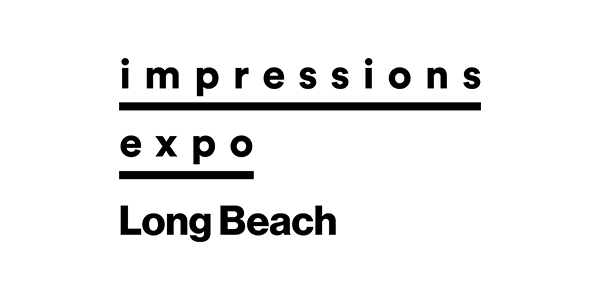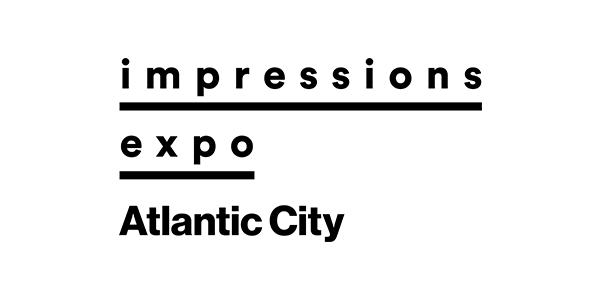I could easily write an article describing the myriad ways every apparel decorator can contribute to the “greening” of our industry. You can’t pick up a newspaper, magazine or watch a television show without someone blathering on about “Global Warming,” “Save the Planet” or another trendy, talking-head catch phrase. Removing the feel-good and karma-building reasons as to why a shop sustainability program should be implemented, I’ll discuss the real reason many companies are actually making such efforts: money.
Many larger corporations are demanding sustainability programs from their supply chain partners. Visit the corporate sustainability websites of Wal-Mart, Coca-Cola, Nike or adidas to see how they are addressing the issue. Usually, when the big boys latch onto something and start educating consumers, it’s going to have a trickle-down effect and will eventually make it to the local marketplace. If you haven’t noticed this already, there’s tons of press about this issue every day focusing on the triple bottom line in corporate America.
But why are these companies really doing this? A good reason is that they understand that they can link aspects of their lean manufacturing programs, governmental regulatory responsibilities, tax incentives and good old-fashioned marketing to make a public stance on sustainability and drive consumer spending their way.
By now you are saying to yourself, “I’m not Wal-Mart, Coke, Nike or adidas. How does this apply to me?” It’s the same principle, but just on a smaller scale. Greg Kitson, founder of Mind’s Eye Graphics, Decatur, Ind., calls it “finding nickels.” He has a sustainability program in his shop and knows if he can save money by doing something he’s already tasked to do, his cost for printing that shirt just went down. If he can save a nickel here or a few pennies there, it eventually adds up to more margin and profit at the end of the year. Makes common sense, right?
Remixing the Three ‘R’s
The three core tenets of any sustainability program are reduce, reuse and recycle. I’d like to add a fourth, which is “Re-Economize.” To elaborate:
Reduce: Find ways around your shop to reduce the amount of energy, materials, labor, etc. used, yet still get the same results for a task. Using less electricity or energy, masking tape, ink, paper or other commodities often goes overlooked in the desire to get that order printed and out the door. Questioning everything, documenting what you are doing, finding methods for reduction, setting goals, and then actually tracking everything involves a lot of work, but it’s worth it. Already doing that? Great! That’s a big part of a sustainability program.
Reuse: This means repurposing one thing and using it in a different way. For example, lots of shops cut down their 30-gallon ink or chemical barrels and use them as trash cans. Or they may use defective or misprinted shirts as shop towels. In your shop, what can you reuse instead of just throwing it away? When buying, can you purchase something already made, such as a press or office furniture? Can you repurpose your scrap paper into office notepads?
Recycle: Paper, cardboard, metal, plastic, electronic devices, hydraulic oil, light bulbs, office furniture, phones, computers, appliances, equipment — even ink — can be recycled. How are you managing this in your shop? Are you in control, or is it a free-for-all?
Re-Economize: While I freely admit this is a word I just made up, it means to take everything listed above and document, track or otherwise show how you are saving or making money with your efforts. This can’t just be a “gut instinct” either — to do this correctly, the industry best practice is to create a list or spreadsheet for use with the program. By continually tracking your efforts, you can quickly understand what’s successful or not, and focus your efforts accordingly.
For example, if you document your energy costs during a period of time, you can link your expenditures with the amount of impressions printed. For the sake of easy numbers, let’s say your shop spends $100,000 a year on energy (electricity, water, natural gas and propane). A simple 5% annual reduction as a goal could amount to savings of $5,000 per year. Every shop is different, but how many shirts would you have to print to make a $5,000 profit? Do you know what it costs per impression to print per year? What if you could drop that cost by a penny per shirt?
Implementing a Sustainability Program
Saving that $5,000 or more a year on costs now seems like a good idea, but how do you get started? First — and I can’t stress this enough — it can’t be a one-man show. To make any real impact at your company, your sustainability program can’t just come as a mandate from the owner or production manager telling everyone to “turn off the lights when you leave the room.” The best industry practice is to build a teamwork culture where everyone shares in the effort and is committed to the program’s success.
Start with organizing a sustainability committee consisting of representatives in all facets of your business. From the shop floor to accounting, the more people invested in the program’s success, the better. If you make them responsible and accountable for the program, they will quickly brainstorm ideas and be eager to get going. However, they may need to have some direction. Specialty Graphics Imaging Association (SGIA) has some great ideas on getting started. Based on my experience, here are a few things you must do to get started:
1) Write your sustainability policy. This will be the core principle that drives your success, and people will refer to it if they are trying to make a decision. It doesn’t have to be overly complex, but it should give direction and demonstrate company responsibility. The policy should show that you are to be in compliance with environmental, health and safety regulations. Give direction for continuous improvement, including areas not subject to regulation. Emphasize pollution prevention from source reduction, reuse and recycling. And finally, communicate information on your sustainability performance. In a nutshell, make it work for your business and how you operate.
2) Get an energy audit. In your local marketplace, this could be a free service that your utility company will provide or one that you may have to pay a small fee to schedule. Either way, it’s a great way to get started and to learn how to save money. Someone will tour your shop and measure for energy inefficiencies, such as heat or cooling loss, HVAC maintenance recommendations and other ideas. An individual report should be written on how you can reduce your consumption, providing examples of where you are wasting money. Chalk this up to “getting an expert to help,” similar to getting an annual physical from your doctor.
3) Engage your staff. Make the program fun! Reward your staff’s efforts and make everyone part of the success. Publish information, graphs, events and news in the company newsletter, on its website or on a bulletin board in the shop. This program can’t be a secret. Celebrate your successes as you go. Give compliments when you catch someone doing something right. Think long term, and don’t let the initial fire die out.
4) Engage your vendors. What are they doing? How can you partner with them to revamp purchasing to be a more sustainable effort for everyone? What are the potential cost savings? For example, perhaps changing the frequency of your purchases can save on shipping or delivery costs. Review year-to-date information and purchase quarterly. Does the added volume purchases on some items amount to a savings? Can you negotiate a rebate based on the vendor saving on shipping costs? You will never know unless you ask.
5) Engage your customers. What’s important to them? Inform them that you are getting started and want to know what they are doing. Partner with them on strengthening your relationship by trying something new. Just having this conversation could be a selling opportunity alone. Can you change their purchasing behavior as part of the program? What if they submit their purchase orders electronically instead of via fax or mail (yes, people still do that), or can you invoice them with a .pdf attachment instead of mailing them a statement? Can you set up electronic payment so you don’t have to use traditional paper checks and deposits? Make sure you annualize the savings and document your efforts so you can see the bigger picture.
6) Don’t be afraid to ask questions. Why are you doing something? What if you do something differently? The statements we’ve all heard before (and unfortunately continue to hear) — “We’ve always done it this way,” “I’m too busy,” “I don’t have time” or “It’s too costly to change” — need to be thrown out as lazy thinking. You are in control of your process; the process is not in control of you. Don’t accept mediocrity as the status quo, as this costs you money.
While you are building your program, you may also want to explore whether obtaining certification through the Sustainable Green Printing Partnership (SGP) makes sense for your company. Depending on your market niche, obtaining this particular certification could be tremendously beneficial, as many companies are demanding that their suppliers not only have sustainability programs, but that they are third-party documented and certified. The SGP program encompasses the entire graphic printing community, so it’s larger than just T-shirt printers. It has only been around for a few years, but it’s gaining momentum.
Currently, there are close to 40 printers certified, and a handful of those are apparel decorators — with more getting certified each year. Marci Kinter, chairperson of the SGP board of directors, says sustainability is quickly becoming a bigger requirement in the business world and that “in the new economy, companies are looking to reduce waste, use the least harmful products, and find more sustainable print systems. Companies that obtain certification differentiate themselves in the marketplace, and can drive more business to them by framing their sustainability story by demonstrating accountability and aligning themselves with the values of their customers.”
Marshall Atkinson is the chief operating officer of Visual Impressions, Milwaukee. He previously worked for the apparel decorating firm T-Formation, Midway, Fla., for nearly 18 years as both the art director and vice president of operations. Atkinson also has participated in trade show and webinar industry panel discussions regarding sustainability and the Consumer Product Safety Information Act (CPSIA). For more information or to comment on this article, e-mail Marshall at [email protected].





